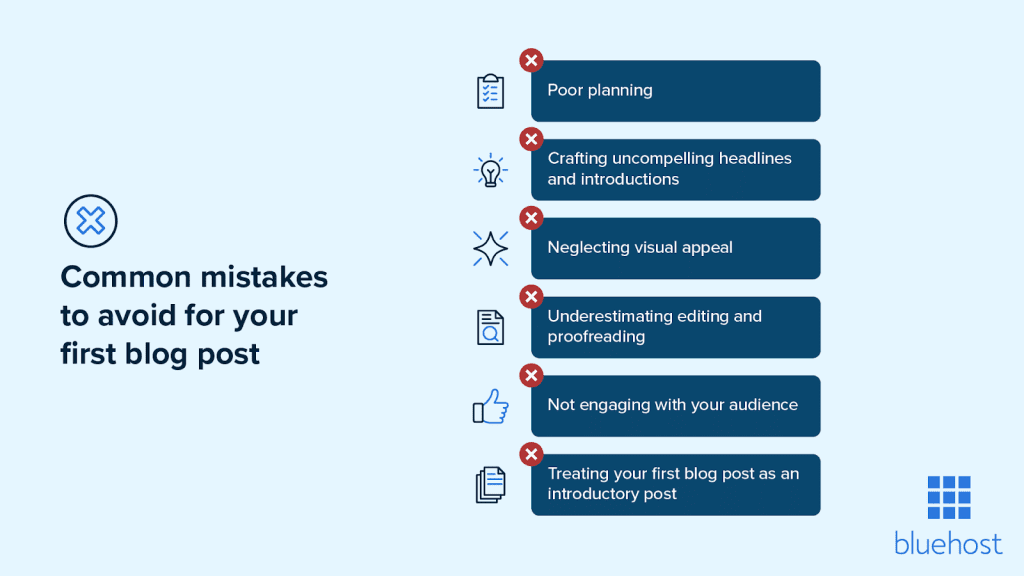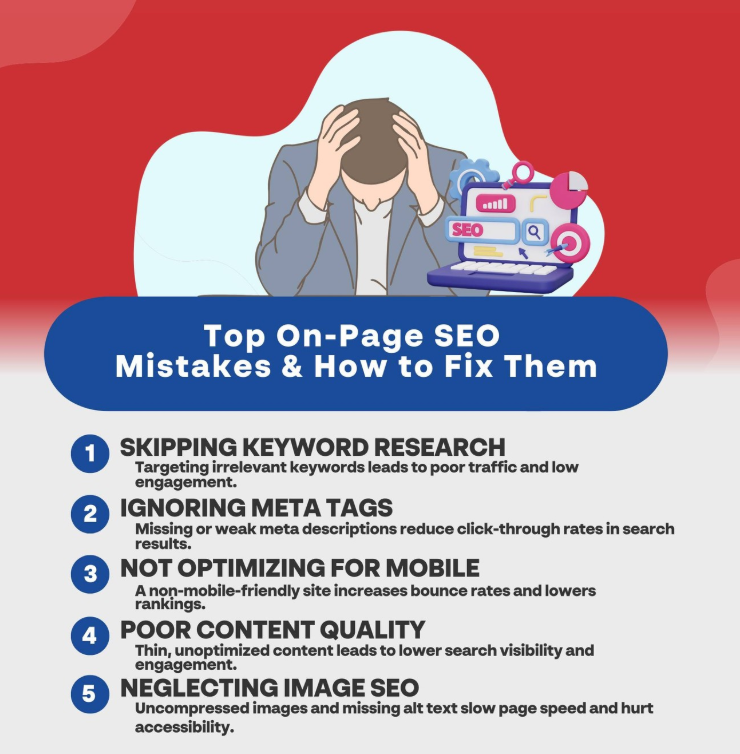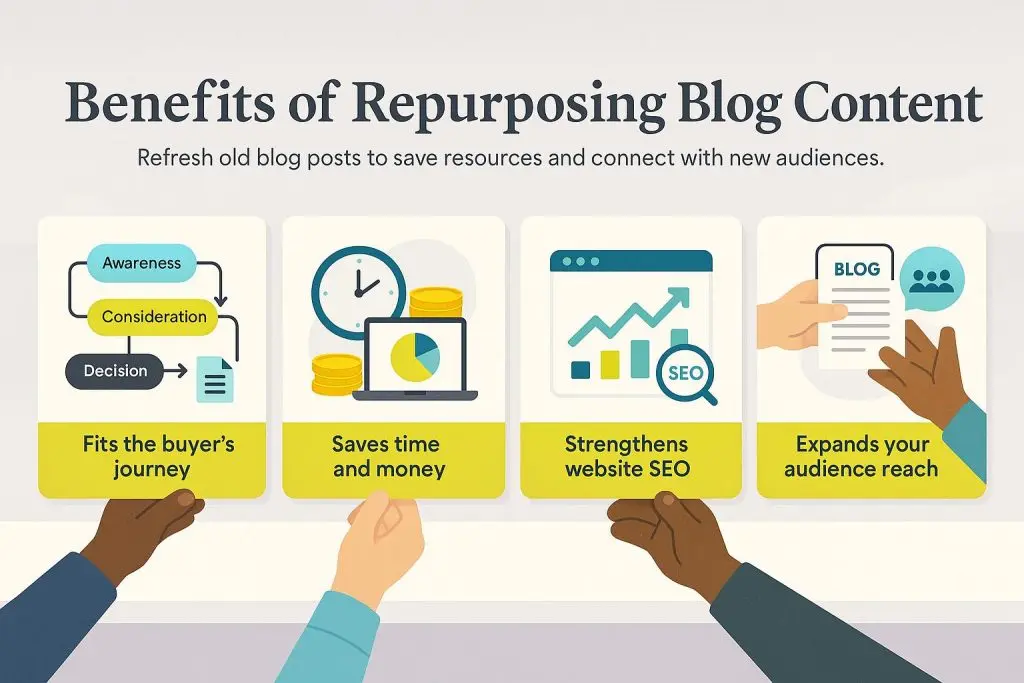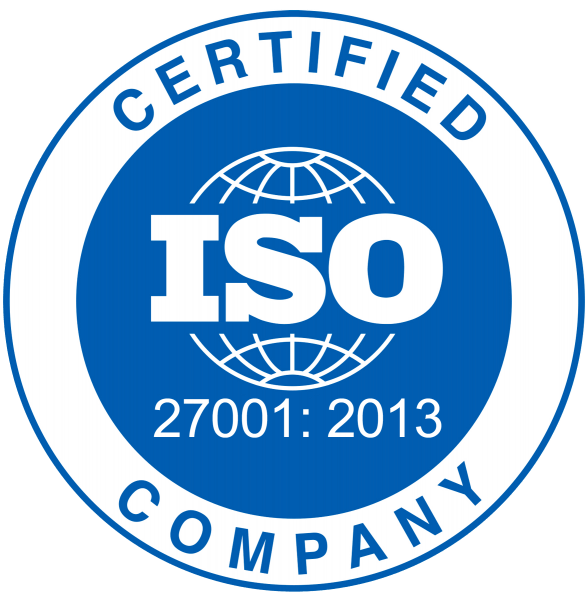
According to the latest stats, there are over 30.7 million eCommerce websites worldwide; this number continuously increases as more and more businesses are shifting online. With so many people entering the digital marketplace, even skilled professionals struggle to improve their businesses when operating online. In order to overcome this challenge, entrepreneurs need effective ways to stand out.
We will discuss 4 common mistakes to check and fix in an eCommerce blog.
In This Blog, We Will Talk About…
4 Common Mistakes Along With Actionable Solutions For Your eCommerce Blogs
One effective way to grow in this competitive digital marketplace is by attracting people through eCommerce blogs. An active, informative blog can help build trust and authority, which ultimately contributes to increased traffic, leads, and conversions.
But here is the problem: many people don’t see any fruitful results from blogging. The issue isn’t with the blogging itself, but with common mistakes in how the blog content is written and optimized.
Below are a few common eCommerce blog mistakes that you can easily check and fix.
Mistake#1: Ignoring SEO in eCommerce Blogging
Ignoring SEO is one of the most common and crucial mistakes when writing your eCommerce blog, as it is the foundation of your blog. You can create and publish new blogs, but without proper SEO elements, they might not reach the intended audience. By implementing the best SEO strategies, including optimizing keywords, improving site speed, building quality backlinks, and creating engaging meta descriptions, you can ensure your content ranks higher in search results and reaches the right readers.
Below are a few of the SEO mistakes and how they affect your blog performance:
-
Keyword Research
Writing a blog without keyword research means you are writing blindly. You might create content that answers the general questions about the topic. But your blog might not cover the issues that people are specifically searching for, especially as search behaviors have evolved to require voice search optimization. Because of this, your blog might not be able to make a prominent presence in the search engine result pages.
-
Meta Tags
Meta tags are HTML tags that consist of a title and a description, and other elements. Meta title is a simple title that appears above the description in SERPs. Both the meta description and title tell readers and search engines about the information the particular page contains. But if you do not write them, Google generates one of its own, which may show incomplete or irrelevant information, reducing the click-through rate of your blog.
-
Optimized Headings
In blogs, headings are crucial. They are one of the few indicators that search engines rely on to understand the structure of your blog. Similarly, readers prefer to skim through the blog by reading the headings to decide if the information is relevant to them. So, a blog with unclear headings will feel unprofessional and messy, increasing bounce rates.
How to Fix SEO Mistakes?
Fixing the SEO mistake is simple and straightforward. In this process you might find it helpful to consult a SEO marketing company to ensure everything is aligned correctly. Given below is a structured approach on how you can fix each of the above mistakes in your e-commerce blog.
-
Keyword Research
Before blog writing, do proper keyword research to identify your content goal. It will allow you to understand the search intent of your audience. You can use online keyword research tools to find keywords against your entered phrase. SEMrush is a reliable option that you can go with.
It gives you a long list of keywords after searching the web. It provides options that help you filter out your keywords based on your intent, search volume, and difficulty. After this, start using these in your eCommerce blog.
Proper research will help you select better keywords for your blog. By creating a blog based on specific keywords, you will have a better chance at making your blog visible to potential customers.
-
Create Unique Titles and Meta Descriptions
Titles and meta descriptions are very important in blogging. These are the first things that readers and search engines see in the search results, giving them a preview of the information available in the blog. So, creating unique titles that answer a user’s search intent will be beneficial for your blog. When it comes to the length of these tags, it’s recommended to keep the title within 60 characters and the descriptions within 160 characters for ideal results.
-
Use Proper Headings
Blogs follow a proper heading structure. Starting from H1, which is the main title of your blog. Followed by H2, which breaks down the content into multiple sections for a better overview of information. Finally comes the H3 and more that help organize the information under the main H2 heading. So, a proper heading structure makes content easy to read for readers and search engines.
Mistake#2: Publishing Low-Quality Content
Creating short or low-quality blogs is another common mistake that many eCommerce brands make. Readers want easy-to-digest content that answers their query. A blog that does not address the real problem of the readers will fail to attract or retain readers.
Given below are a few of the common problems with low-quality content.
-
Writing Without Enough Depth
When readers perform a search, they are looking for actionable solutions to their problems. They will skim your blog, and if the blog does not provide any valuable information, they will immediately leave it. This action increases bounce rate and which in turn gives a signal to the search engines that your blog does not provide any valuable information to the readers. This will ultimately hurt the ranking of your blog.
-
Publishing Fluffy or Generic Posts
People are fed up with generic and fluffy content. They need a solution that is described in clear wording. According to Brian Lim, CEO of iHeartRaves & INTO THE AM, “Low-quality blogs damage your website’s trust and authority by making your brand seem less credible. It will give the impression that you do not have any expertise in your niche. Thus, potential customers will have a bad impression of your brand.
Similarly, search engines prefer content that thoroughly defines the topic. A blog that conveys information wrapped in vague wording struggles to rank in search engines.
How to Fix Blog Content Mistakes?
The following are the solutions for fixing this problem:
-
Deliver Valuable Content
When you write an e-commerce blog, your focus should be to provide as much information and value as you can. However, you’ll need to make sure that the information is relevant to the topic.
For example, if you’re writing a guide on “how to pick the right Air Conditioning Unit for your home”, you should discuss factors such as energy efficiency, room size, and budget considerations so readers find your content helpful for making an informed decision.
The goal is to produce the right and valuable content without deviating from the topic. However, the writing creativity doesn’t remain the same all the time.
Let’s see how you can make the blog more fun –
In a situation when you feel stuck and are unable to proceed with the writing, you can turn to AI-powered writing tools for fresh ideas that will help you move forward without losing focus on the topic. Editpad is one of them that you can use to expand short drafts into well-structured, informative paragraphs, adding more depth and value to your eCommerce blog.
Additional Tip:
Create comprehensive blogs and aim for 1000-1500+ words per blog at a minimum. It has been observed that people value content that covers all the aspects of the topic. So try to write complete guides instead of short blogs that leave readers searching for information elsewhere.
-
Strengthen Content with Stats and Insights
You should include reliable stats, research studies, examples, or similar kinds of information in your blog. These elements strengthen your claim and quickly improve the credibility of your blog.
For example, in eCommerce blogs, you can add trends or cite data from Statista, Shopify, or HubSpot. Information from these elements will make your blog seem more trustworthy and authoritative.
-
Provide Practical and Actionable Solutions
The best blogs are those that provide readers with proper solutions. So, create blogs that are actually valuable for the readers, and offer solutions to their problems. This way, your blog will become more attractive to readers, which in turn will improve its visibility on the SERPs.
Mistake#3: Forgetting to Add CTAs (Calls to Action)
A common problem in e-commerce is that they do not have any CTAs. Brands often focus on delivering information to the readers. But what is the use of information if it does not provide any conversion?
Forgetting to add CTAs can affect your blog performance in the following ways:
-
Lost Conversion Opportunities
A good CTA provides direction to the visitors and can turn them into buyers, increasing conversions. But if your blog does not have proper CTAs, readers may leave your blog without taking any meaningful action. This may result in lost conversion opportunities.
-
Low Engagement Metrics
CTAs can also serve well to encourage readers to visit your other blogs. Without them, readers may leave your blog after viewing it. This will lower the engagement metrics, like dwell time on the site, giving a bad signal to search engines.
How to Fix CTA Mistakes?
You can fix this issue by simply adding at least one clear CTA in every eCommerce blog. But make sure, that it feels natural and aligns with the reader’s intent. A promotional or sale-heavy CTA will hurt your blog.
For example, you can add CTAs such as:
“Explore our Product” for readers who are interested in your products.
“Download our free guide” for readers who are seeking knowledge
“Sign up for the newsletter” for long-term engagement.
These simple CTAs will help you build trust with your readers, and gradually, they will generate traffic. Just make sure your CTAs are visible to people. CTAs hidden in the middle of the long paragraph can be easily overlooked.
Mistake#4: Not Updating or Repurposing Old Blogs
Blogs are not just one-time investments; they can continue driving traffic, leads, and conversions for years. However, many e-commerce brands make the mistake of ignoring their old blogs. With proper content updates and technical SEO services, these older posts can be revived to rank higher, attract fresh visitors, and generate consistent results
But if your blog has outdated information, it will no longer be relevant for today’s audience. To the search engines, an outdated blog will indicate that it does not provide any useful information. This will reduce the overall ranking of the blog even if it performed well in the past.
In some cases, you mentioned a few products in one of your blogs, and now you no longer offer them. Leaving it unattended will confuse readers and waste the opportunity to market your current products or services.
How to Fix Old Blogs?
Before we discuss how to fix and repurpose old blog content, let us see what are the benefits of doing this –
Old blogs, especially the ones that brought results in the past, are a great opportunity for growth. To make the best out of the old blogs, you can make the following changes –
-
Audit the Blog Content
Audit your blogs at least once or twice a year to keep them updated and relevant. This way, you can improve the reader experience on your content and signal to the search engines that your content is updated with the latest information.
In your old blogs, the things to focus on should be:
- Outdated statistics
- Broken or missing links
- Outdated content
-
Refresh Titles, Descriptions, and Images
To make the best out of your old e-commerce blogs, you can make small changes to the titles and meta descriptions. Some of these changes can be: use relevant keywords and update them with the latest SEO strategies to make it more reader-friendly, or swap old images with high-quality images, charts, or stats to make your blog feel brand new.
-
Repurpose the Content for Wider Reach
You can repurpose your best-performing blog posts into different formats and reach the audience across multiple platforms. For example, you can turn a long blog into:
- Social media posts
- Short video
- Email newsletter series
By doing this, you can share information with a large audience across various platforms. The best part is that improving the old blog is much easier than creating a new one. Hence, repurposing or updating the old blogs can help you connect with a large audience and improve the overall ranking of your website. To maximize your reach, consider leveraging a Facebook Ad Creator to turn your blog content into engaging ad campaigns. If your goal is to promote your blog articles on social media without repurposing them, you can use tools like Nuelink. It lets you automatically publish blogs from WordPress, Ghost, or any blogging platform directly to your social media accounts
Conclusion
eCommerce blogs can significantly increase the chances of sales if you use them correctly. Brands often create blogs, but a few simple mistakes hold them back from success.
We have discussed some of these mistakes along with how you can fix them in the blog above. As long as you start correcting the mistakes in your blogs, you can connect with potential customers and build a consistent source of organic traffic, customer engagement, and conversions.













